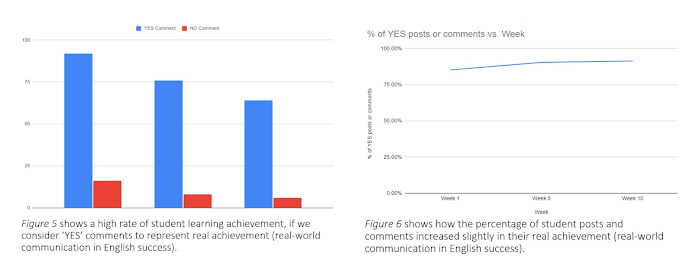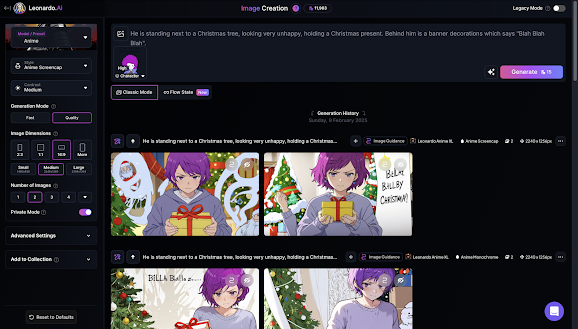#15 The Importance of Showing Real Learning Achievement in Ed-Tech Project-Based Learning
This blogpost may be of interest to any educators who are considering how to set up effective and measurable project-based learning activities using ed-tech tools, platforms and apps.
I recently completed my Masters thesis project in Educational Technology & Instructional Design. The aim of the project was to
a) describe a case study project for EFL elementary school-aged learners based on an ed-tech affinity group which utilized Google Workspace apps including Classroom, Forms and YouTube.
b) show how such ed-tech projects, which lack formal and traditional methods of evaluation such as exams or coursework, can be evaluated to assess the real learning achievements of participating students.
The full thesis can be found here.
Here follows a very brief summary of the project, the techniques used to assess learning, and why it’s important to have such assessment.
_______________________
In this blogpost from last year there is a full description of the the ed-tech affinity group project, which was based on students learning how to make Roblox games. The goal was to give my EFL students an opportunity to practice, use and learn English through the various project activities. The project has been conducted synchronously and asynchronously online, and also face-to-face at school.
The project, which was an initial 10-week project which has now continued for over two years, has seemed to be a great success. But how can such a project be evaluated in terms of students’ learning achievement?
The answer to this question is what I will call Holistic Evaluation. What does this mean? Simply put, it means using a wide variety of both quantitative and qualitative evaluation techniques which, when pooled together, give a very clear picture of students’ learning achievements. 5 evaluation techniques were used:
- Teacher Surveys
- Student Surveys
- Google Forms Response Assessment
- Classroom Interaction Counts (both quantitative and qualitative analysis)
- Face-to-Face Interaction Counts (also both quantitative and qualitative analysis)
By themselves, all five techniques have different limitations, but when all the results from the five techniques are pooled, it is possible to give all stakeholders at the school a clear overall picture of the real learning achievement of students: This includes the students themselves, of course, but also the teachers, the school management team and parents.
It is important that stakeholders are able to see clear achievement in this type of learning project. Why?
Project-based learning may seem fun, but for some educators and parents steeped in the traditional view of education as passing exams and coursework, there may be skepticism that new forms of learning which utilize technology have any inherent educational value. Here is an example:
Some of the students who participated in the group project discussed in this blogpost made a YouTube video in English as a presentation at the end of the initial 10-week project. This was quite an undertaking for those native Chinese-speaking students, aged 8-11, to learn the technical aspects of such an endeavor and complete it all in the medium of English. However, they succeeded, and their language use in the video was assessed based upon a simple rubric. One student, however, was unable to participate as his father banned him from accessing/watching YouTube because YouTube was deemed to be a bad influence. Although it cannot be proved, it is quite likely that this parent would not give much time to such ed-tech project learning in general. People who are dubious about the impact that technology can have on learning need to be convinced and this example highlights why it is important to be able to show evidence of real learning achievement when these kinds of projects are undertaken.
So, to conclude. If you are an educator embarking on any form of ed-tech project-based learning, make a point of considering how you want to evaluate the real learning achievement of your students, if traditional exams and coursework are not built into your project. You do not necessarily need to use all the five techniques mentioned in this post, but do consider an approach that covers both quantitative and qualitative data.
__________________
NOTE: This ten-point template, taken from the thesis, may be a good starting point for educators new to using ed-tech project-based learning.
1. If possible, make the group voluntary, not mandatory.
2. Find an appropriate affinity group topic. This should be done by talking to or letting students choose the subject and nature of the project. If it is not possible to give students the freedom to choose the topic of their project, extensively canvas students for their opinions on how they would like to conduct the project with the topic given.
3. Set out and clearly define what the initial group project aim is at the beginning. Encourage students to take a lead, but give the group structure, particularly in the beginning. For example, learning content packed into weekly surveys, videos or PowerPoints. If the project diverges into other aims later because the students decide to take it in that direction, this is fine, as long as opportunities for real learning achievement are still possible.
4. Identify ‘Experts’ and ‘Group Leaders’ from the volunteer cohort who can help manage, run and drive the group forward. They may or may not be designated as such officially within the group, it isn’t important. As a teacher just be aware that you can harness the power of their motivation, knowledge and skills to create further learning opportunities for the group.
5. By situating learning within online apps such as Google Classroom, a measurable record of interaction data will be retrievable throughout the project and also when it concludes. Also evaluate real achievement through surveys which can be analyzed, showing what students produce, and which students produce. Final products such as presentations, videos or podcasts etc can also be utilized to evaluate real achievement. Embed learning/practice activities into those products.
6. Choose tech tools and apps for the group to use. To keep barriers to learning low, have a small core of apps or tools and use them with students repeatedly so that students can get into a routine of using those tools and not be overwhelmed by an ever-changing suite of tools. Make sure students are properly trained to use the chosen technology prior to the start of a project.
7. Use and manage a simple social media stream page, such as in Google Classroom, Edmodo or Padlet, for free and creative expression of students. Don’t forget to set out standards for online communication between students and police it properly. If all your students volunteered to join the project, this should not be a big issue, but always be vigilant.
8. Evaluate students’ feelings about the group through feedback surveys. How motivated are they? What motivates them to participate? Surveys can be done at stages throughout the project, thus potentially generating new ideas and directions for the project.
9. To create a sense of community it is a good idea to mix up synchronous and asynchronous activities if possible. Both can be done online but synchronous face-to-face meetings are particularly enjoyable for young learners.
10. Encourage differing levels of participation, from passive to active. Make sure the group remains a pleasure not a chore to its members.





Comments
Post a Comment